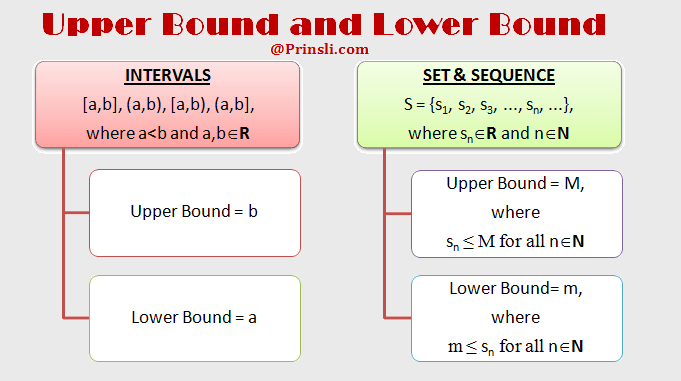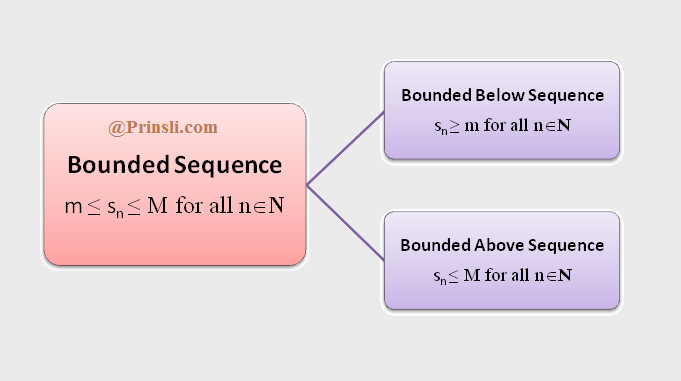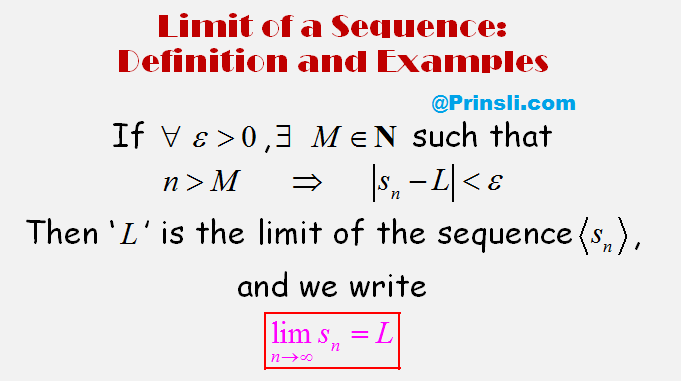
Upper Bound and Lower Bound
We will define the upper bound and lower bound with examples first, followed by the supremum and infimum.
Definition of Upper Bound:
Intervals – For each of the intervals [a, b], (a, b), [a, b), (a, b], where a, b ∈ R and a < b, the upper bound is the number ‘b’. Every number larger than ‘b’ is also an upper bound of that set or interval.
Sets – For a set {
}, the upper bound is the number M, if M satisfies the following condition,
for all n ∈ N.
That is, if M is an upper bound of the set S, then every element of the set S will be less than or equal to the number M.
NOTE – If M is an upper bound of a set, then every number larger than M is also an upper bound of that set. Hence, if a set has an upper bound, it has an infinite number of upper bounds.
Definition of Lower Bound:
Intervals – For each of the intervals [a, b], (a, b), [a, b), (a, b], where a, b ∈ R and a < b, the lower bound is the number ‘a’. Every number smaller than ‘a’ is also a lower bound of that set or interval.
Sets – For a set {
}, the lower bound is the number m, if m satisfies the following condition,
for all n ∈ N.
That is, if m is a lower bound of the set S, then every element of the set S will be greater than or equal to the number m.
NOTE – If m is a lower bound of a set, then every number smaller than m is also a lower bound of that set. Hence, if a set has a lower bound, it has an infinite number of lower bounds.
Examples of Upper and Lower bounds –
Example 1.
Find three upper and lower bounds of the interval [0, 1):
By definition of upper bound, the upper bound of the interval [0, 1) is 1. Hence, three upper bounds for this set are 1, 2, and 3.
By definition of the lower bound, the lower bound of the interval [0, 1) is 0. Hence, three lower bounds for this set are 0, −1, and −2.
Example 2.
Find three lower and upper bounds for the set {π, e}:
We know that and
. It is obvious that: π > e.
By definition of upper bound, the upper bound of the set {π, e} is π, and so, three upper bounds for this set are π, 2π, and 3π.
By definition of the lower bound, the lower bound of the set {π, e} is e, and so, three lower bounds for this set are e, 2, and 1.
Example 3.
Find three upper and lower bounds for the following sequence:
This sequence can be written as follows:
By definition of upper bound, the upper bound of this sequence is 1, and so, three upper bounds for this set are 1, 2, and 3.
By definition of the lower bound, the lower bound of this sequence is 0. Hence, three lower bounds for this set are 0, −1, and −2.
Example 4.
Find three lower and upper bounds for the set {0}:
This set is a singleton set (a set that has only a single element).
By definition of upper bound, the upper bound of the singleton set {0} is 0, and so, three upper bounds for this set are 0, 1, and 2.
By definition of the lower bound, the lower bound of the singleton set {0} is 0. Hence, three lower bounds for this set are 0, −1, and −2.
Read Also: What is the bounded and unbounded sequence?
Copyrighted Material © 2019 - 2024 Prinsli.com - All rights reserved
All content on this website is copyrighted. It is prohibited to copy, publish or distribute the content and images of this website through any website, book, newspaper, software, videos, YouTube Channel or any other medium without written permission. You are not authorized to alter, obscure or remove any proprietary information, copyright or logo from this Website in any way. If any of these rules are violated, it will be strongly protested and legal action will be taken.




Be the first to comment